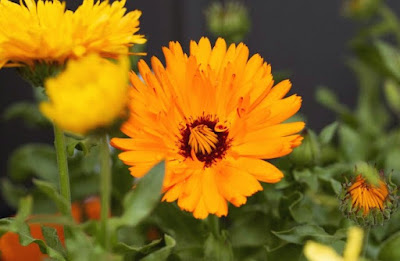Top 10 Endangered Medicinal Plants in the World
Medicinal plants have been invaluable resources for human health and well-being for centuries. These plants contain compounds that possess therapeutic properties, making them essential in traditional medicine systems. However, the alarming rate of habitat destruction, overharvesting, and climate change has pushed several medicinal plants to the brink of extinction. In this article, we explore the top 10 endangered medicinal plants in the world and shed light on the urgent need for their conservation.
1. Holy Basil
Scientific Name: Ocimum tenuiflorum
Holy Basil, also known as Tulsi, is a sacred plant in Hindu culture and a key component of Ayurvedic medicine. It has been used for centuries to alleviate stress, promote digestion, and support respiratory health. However, the increasing demand for its medicinal properties, coupled with habitat destruction, has led to its endangered status.
2. Sage
Scientific Name: Salvia officinalis
Sage is a perennial herb known for its culinary and medicinal uses. Its leaves contain essential oils that possess antimicrobial and anti-inflammatory properties. Sage has been used to soothe sore throats, alleviate menopausal symptoms, and aid in digestion. Despite its widespread use, unsustainable harvesting practices and loss of suitable habitats have placed Sage on the endangered list.
3. German Chamomile
Scientific Name: Matricaria chamomilla
German Chamomile is renowned for its calming properties and is often used in herbal teas and skincare products. It contains compounds called chamazulene and bisabolol, which have anti-inflammatory and antioxidant effects. However, habitat destruction and the increasing demand for its flowers have severely affected its population, making it one of the endangered medicinal plants.
4. Lavender
Scientific Name: Lavandula spp.
Lavender is a fragrant herb widely recognized for its soothing aroma and medicinal properties. The essential oil derived from its flowers is used in aromatherapy to promote relaxation and improve sleep quality. Lavender also possesses antimicrobial and anti-inflammatory properties. However, due to habitat loss and the intensification of agriculture, several species of Lavender are now endangered.
5. Peppermint
Scientific Name: Mentha piperita
Peppermint is a popular herb known for its refreshing aroma and cooling sensation. It contains menthol, which has analgesic and decongestant properties. Peppermint tea is often used to relieve digestive issues such as bloating and indigestion. However, the destruction of its natural habitats and the conversion of land for agricultural purposes have contributed to its endangered status.
6. Ashwagandha
Scientific Name: Withania somnifera
Ashwagandha is an important herb in Ayurvedic medicine and is revered for its adaptogenic properties. It is used to combat stress, boost energy levels, and enhance overall well-being. Despite its medicinal significance, Ashwagandha faces the threat of extinction due to overharvesting and habitat loss.
7. Echinacea
Scientific Name: Echinacea spp.
Echinacea is a group of flowering plants native to North America. It is widely used in herbal medicine to support immune function and treat respiratory infections. Echinacea species are threatened by habitat degradation, climate change, and the collection of wild populations for commercial purposes.
8. Calendula
Scientific Name: Calendula officinalis
Calendula, also known as Pot Marigold, is a bright and cheerful flower with various medicinal properties. Its petals contain compounds with anti-inflammatory and wound-healing effects. Calendula oil is often used topically to soothe skin irritations and promote skin health. However, the destruction of natural habitats and the limited availability of suitable environments have contributed to its endangered status.
9. Rosemary
Scientific Name: Rosmarinus officinalis
Rosemary is an aromatic herb that has been used for centuries in culinary and medicinal applications. It contains antioxidants and anti-inflammatory compounds that support brain health and improve digestion. Rosemary is facing endangerment primarily due to habitat loss and the expansion of urban areas.
10. Garlic
Scientific Name: Allium sativum
Garlic is a pungent bulb widely recognized for its culinary and medicinal properties. It possesses antimicrobial and cardiovascular benefits and is used to boost the immune system. Despite its popularity and ease of cultivation, wild varieties of Garlic are endangered due to habitat destruction and the displacement of natural populations.
Conservation Efforts:
The endangered status of these medicinal plants necessitates immediate conservation measures. Various organizations and initiatives are working towards protecting and restoring their natural habitats, implementing sustainable harvesting practices, and promoting awareness about the importance of medicinal plant conservation. Collaborative efforts between governments, local communities, and conservationists are crucial to safeguarding these invaluable resources for future generations.
Conclusion:
The top 10 endangered medicinal plants highlighted in this article serve as a reminder of the urgent need to protect and preserve our natural heritage. Their medicinal properties have benefited humanity for centuries, and their potential loss would have significant implications for healthcare and biodiversity. By promoting sustainable practices and raising awareness about the importance of conservation, we can ensure the survival of these valuable medicinal plants for generations to come.
FAQs
Q1: Why are these medicinal plants endangered?
The primary factors contributing to the endangerment of these plants include habitat loss, overharvesting, climate change, and the destruction of natural ecosystems.
Q2: Can these plants be cultivated to mitigate their endangered status?
Yes, cultivation can play a crucial role in conserving endangered medicinal plants. It helps reduce pressure on wild populations while ensuring a sustainable supply of these valuable resources.
Q3: Are there any legal protections in place for these endangered plants?
In many countries, laws and regulations exist to protect endangered plant species. These measures aim to control trade, promote sustainable harvesting, and preserve their natural habitats.
Q4: How can individuals contribute to the conservation of these plants?
Individuals can support conservation efforts by purchasing sustainably sourced herbal products, growing medicinal plants in their gardens, and supporting organizations involved in medicinal plant conservation.
Q5: What are the potential consequences of losing these medicinal plants?
The loss of these plants can have far-reaching consequences. It may lead to the extinction of valuable medicinal resources, disrupt ecosystems, and impact traditional healthcare systems that rely on these plants for treatments.

























0 Comments